Dow704 diffusion pump oil (tetramethyl tetraphenyl trisiloxane) is used in large and medium diffusion pumps for a wide range of research and production applications, as the lower attainable pressure rationalizes the expense of this excellent fluid.
The main benefits of Dow704 diffusion pump oil are:
- Greater resistance to oxidation and hydrolysis at operating temperatures.
- Provides a suitable fluid for aggressive applications for which ultimate pressures (without trapping) are required in the 10-7 Torr range.
- Using first class LN2 traps, chamber pressures can approach the 10-11 Torr range.
- Applications include vacuum metal casting, diffusion bonding and instruments.
This sample is frequently used by Anasazi Instrument to demonstrate the use of multinuclear experiments on the EFT spectrometer as it offers the ability to run single and two-dimensional experiments on 13C, 1H, and 29Si.
The 60 MHz proton spectrum for Dow704 diffusion pump oil is shown in Figure 1. All of the resonances can be seen to be well resolved, with the two methyl resonances having six identical protons. The assignments of these are H8,9:0.60 ppm, and H6,7:0.15 ppm.
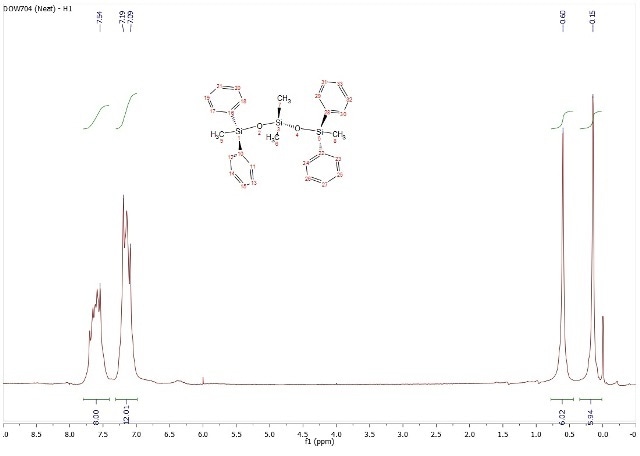
Figure 1. Proton spectrum Dow704 pump oil
A significant amount of symmetry in the tetramethyl-tetraphenyl-trisiloxane molecule is observed. In Figure 2, the numbering of each group is duplicated to make assignments less complex.
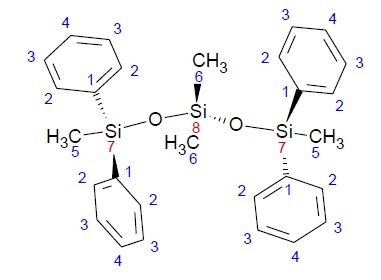
Figure 2. Tetramethyl tetraphenyl trisiloxane molecule
Figure 3 shows a spectrum of 13C obtained in 1 min, in which each of the peaks can be seen to be clearly resolved. While the evidence is not entirely clear, the following assignments can be made: C1:137.4 ppm, C2:133.8 ppm, C4:129.4 ppm, C3:127.6 ppm, C6:1.29 ppm, C5:0.72 ppm.
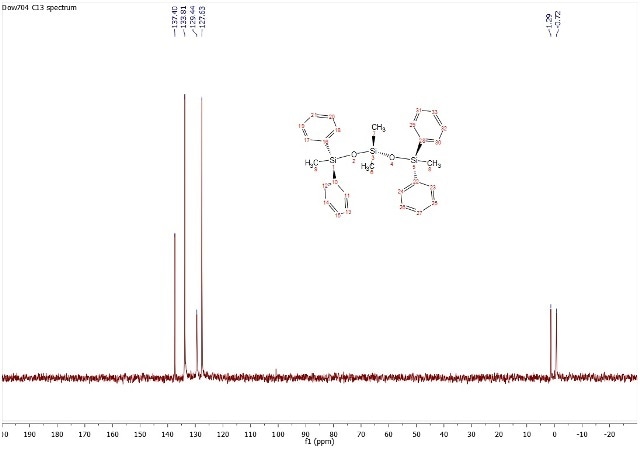
Figure 3. C13 spectra of Dow704 Diffusion pump oil
These assignments can be confirmed by observing the 2D 29Si X-HETCOR spectrum. Unlike in the majority of organic molecules, in which a substituted ring carbon is seen to appear with a smaller amplitude than the other peaks on the ring, the carbon at position C1 has a comparable amplitude when compared to the other carbons on the ring.
Heteronuclear Correlation (HETCOR)
Although the COSY experiment and the HETCOR experiment are similar, there is a difference concerning the coupling between two different nuclei types. The HETCOR technique is usually used to correlate proton resonances with those of directly bonded carbon-13 (or other) nuclei.
The axes of the contour plot represent the proton and other X-nucleus chemical shift ranges and signals are seen to occur at coordinates related to the shifts of the bonded pairs of nuclei. In this experiment, X-nucleus signals are detected rather than those of the protons. By modifying the delays in HETCOR, long range coupling information (couplings between proton and X-nucleus through 2-3 bonds) can be obtained.
The HETCOR spectrum for Dow704 is shown in Figure 4. The results obtained using HETCOR strengthen the assignments made in the C13 spectrum. The 137.4 ppm peak indicates that no directly attached protons are associated with that resonance.
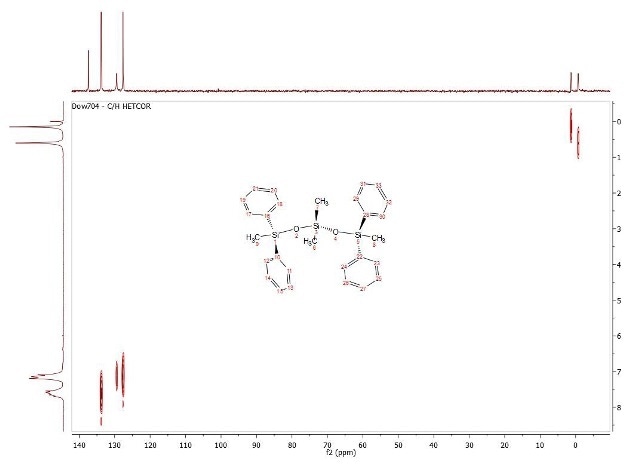
Figure 4. C13-H1 Heteronuclear Correlation (HETCOR) of Dow704 diffusion pump oil in CDCI3
X-Nucleus Polarization Transfer (XPT)
Multinuclear spectra can be routinely obtained by modern NMR spectrometers. However, it is more difficult to obtain a 13C-NMR spectrum than a 1H-NMR spectrum for two main reasons.
Firstly, there is a low natural abundance of a number of NMR active isotopes, meaning that per mole of compound, there are fewer NMR-active nuclei to absorb energy. Secondly, the inherent signal intensity per nucleus is particularly low.
As a result of this, NMR spectroscopists are seeking new methods to improve the signal intensity of carbon and other X-nuclei. All of the methods developed so far involve a phenomenon known as polarization transfer, in which magnetization is transferred via spin-spin couplings.
Figure 5 shows the 29Si 1D acquisition (bottom) and the 29Si XPT acquisition (top) and demonstrates the advantages of the X-Nucleus polarization transfer experiment. The two silicon assignments in the sample are based on the peak strength, with the interior 29Si at -18 ppm and the two exterior 29Si at -12 ppm. Both experiments were carried out uninterrupted on the same sample, using the same parameters. The S/N ratio for the two spectra are 29.6 and 74.0, respectively.
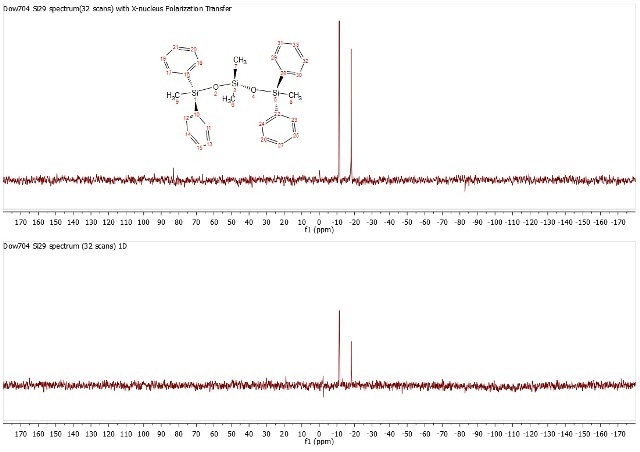
Figure 5. Si29 1D and XPT spectra of Dow704 diffusion pump oil in CDCI3
29Si X-Nucleus Heteronuclear Correlation (X-HETCOR)
Similar to the COSY experiment, the Heteronuclear Correlation (HETCOR) experiment differs in that it concerns coupling between two different types of nuclei. This method is typically used to correlate proton resonances with those from directly bonded carbon-13 (or other) nuclei.
The axes of the contour plot represent the chemical shift ranges of the proton and other X-nucleus, and signals occur at coordinates corresponding to the shifts of the bonded pairs of nuclei. In this experiment, signals from the X-nucleus are detected rather than those of the protons.
Figure 6 shows the 1H-29Si X-HETCOR spectrum for Dow704. The results of the X-HETCOR strengthen the assignments made in the C13 and proton spectra. The 29Si peak at -12 ppm displays coupling to the phenyl resonance as well as the proton peak at 0.60 ppm. The 29Si peak at -18ppm is shows coupling to the methyl resonance at 0.15 ppm.
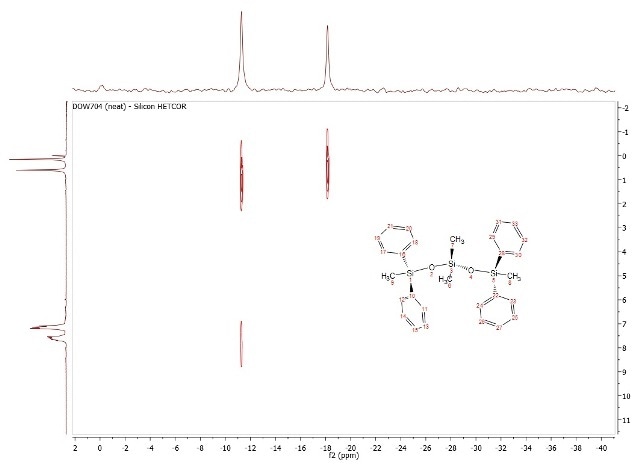
Figure 6. Si29-H1 X-Nucleus Heteronuclear Correlation (X-HETCOR) of Dow704 pump oil
About Anasazi Instruments
 Anasazi Instruments has been providing high quality, rugged, easy-to-use 60 and 90 MHz NMR spectrometers and upgrades to the educational and industrial markets. These instruments have been successfully implemented at hundreds or institutions ranging from large companies and top-tier universities to community colleges throughout North and South America. In research environments, the Eft is a cost-effective workhorse for synthetic and analytical laboratories.
Anasazi Instruments has been providing high quality, rugged, easy-to-use 60 and 90 MHz NMR spectrometers and upgrades to the educational and industrial markets. These instruments have been successfully implemented at hundreds or institutions ranging from large companies and top-tier universities to community colleges throughout North and South America. In research environments, the Eft is a cost-effective workhorse for synthetic and analytical laboratories.
Sponsored Content Policy: News-Medical.net publishes articles and related content that may be derived from sources where we have existing commercial relationships, provided such content adds value to the core editorial ethos of News-Medical.Net which is to educate and inform site visitors interested in medical research, science, medical devices and treatments.